Features/Analysis
University Of Maiduguri Teaching Hospital Bringing Hope to Resident of Northeast Nigeria
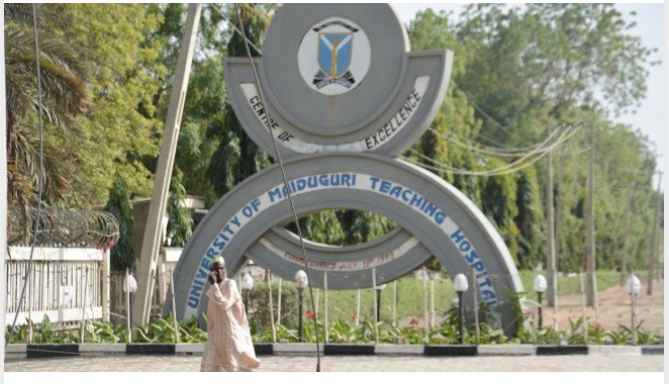
University Of Maiduguri Teaching Hospital Bringing Hope to Resident of Northeast Nigeria
September 2021 will mark the third year of the Chief Medical Director (CMD), Professor Ahmed Ahidjo on the saddle as Chief Executive of the University of Maiduguri Teaching Hospital UMTH.
He is not a man known for too much celebration amidst mounting problems considering the fact that he came in from the academic background as the Provost of the College of Medical Sciences. There is no department without its own problems but this piece which emanated from an interview with the CMD, and many others in the facility, spells out his doggedness in trying to fix the Kidney Center which like others has not enjoyed the best of times since the inception of the lingering insurgency.
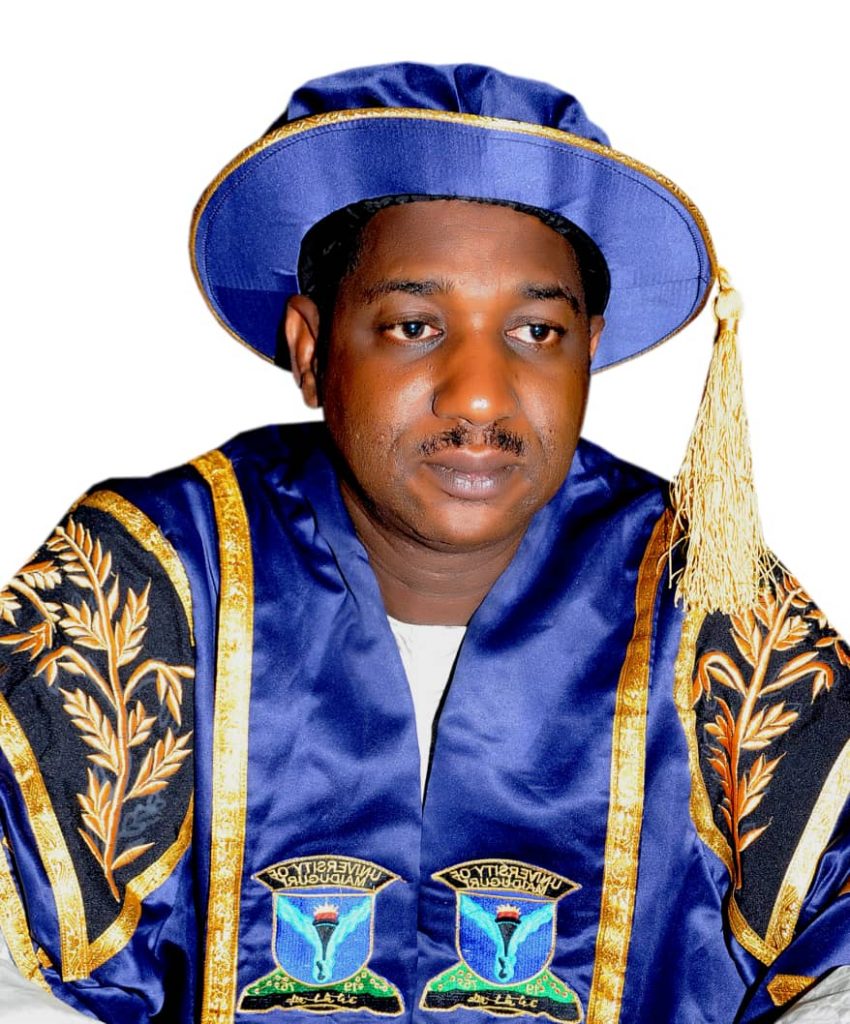
The report was put together by Sam Kayode our Northern correspondent.
In the myriad of renal problems affecting the residents of Borno State, the commencement of the extension of the kidney Centre of the University of Maiduguri Teaching Hospital UMTH marks a big milestone in the history of the North – East region of Nigeria.
All things being equal, the center should be ready to bring hope back into the lives of many patients before the end of this year and beyond.
BACKGROUND WITH INITIAL OBJECTIVES OF THE CENTER
Indeed, the current extension of the kidney Center of the UMTH is a big plus to the management led by Professor Ahmed Ahidjo, a consultant Interventional Radiologist. As a matter of fact, it is one of the greatest achievements that has ever happened in the history of the institution since its inception in July 1983. The advent of the lingering Insurgency into the North East region however has brought to the front burner the need for the current extension going on in the center. Many watchers on the development of the institution and stakeholders who spoke with this reporter on the development in the institution cannot wait to benefit from it.
It is an achievement to humanity says Professor Babatunde Omotara, a Don of Community Medicine who started his career in the hospital and witnessed the first transplant supported by some experts in UMTH and Obafemi Awolowo University Teaching Hospital OAUTH.
But its growth has not been very smooth from then because, from the eyes of other partners in the health sector like the Head of nursing in the facility, Innocent Mamza, enough attention has not been given to the training of
nurses with nephrological background over the decades which is why their number is negligible years after the first transplant.
He commends the center but warns that there are only sixteen nephrological nurses in the center now making it grossly inadequate. This is why it is heartwarming that the administration of Professor Ahidjo has come around to update the facilities in the institution including that of the kidney center that was almost running into a comatose state.
Before the assumption of Professor Ahidjo in September 2018, there were lots of setbacks in this center but it is obvious now that there is light at the end of the tunnel. It is expected that by the time the extension is completed, the synergy which Mamza is praying for between the partners in the sector will be enhanced and a bigger headway will be opened in the process of management of the sick.
Commenting on the extension, the coordinator of the center, Professor Ibrahim Ummate, a Nephrologist in an exclusive interview told this reporter that he has been waiting patiently for the completion of the physical structure so that vital equipment can come in.
With the completion of the physical structures, he expects a lot of collaboration with colleagues from all over the world during his tenure as Coordinator so he can implant his expertise on patients. He is also looking forward to transplants and researches which have been long overdue.
This reporter recalls that Governor Babagana Zulum of Borno state had challenged the experts in the region to produce a practicable solution to the prevalence of kidney challenges in the region. By the time the funds for the research are released and the results start trickling in, there would be an urgent need for the setting up of an institute to train nurses who will complement the doctors in bringing succor to the people.
LIMITATIONS AND CHALLENGES OF THE KIDNEY CENTRE
Presently, the major challenge of the entire facility is a severe shortage of manpower and modern equipment for operations. And this was occasioned by the massive exodus of trained personnel in the last decade of insurgency as regretted by the Chairman Medical Advisory committee CMAC Prof Mala Bukar Sandabe in one of our chats with him.
Sandabe who is also a problem solver believes that this matter can be sorted out as soon as the new extension comes on stream. The center has two Nephrologists, three Urologists, and Resident doctors ready to take it beyond just dialysis and some tests which are carried on in the side laboratories. There is also a workshop for engineering technologies that supports the sophistication of dialysis machines. Repairs of the machines are done locally now to keep the service going and to avoid regular invitations of the manufacturers when they malfunction.
However, to transit from this present status of needs to the expectations of transplant centers, there is a dire need to increase these consultant specialists to stand up to the daily challenges that go with such a modern center, said Professor Ummate. This is a lacuna that must be handled by the management team led by Ahidjo and supported by CMAC Professor Sandabe.
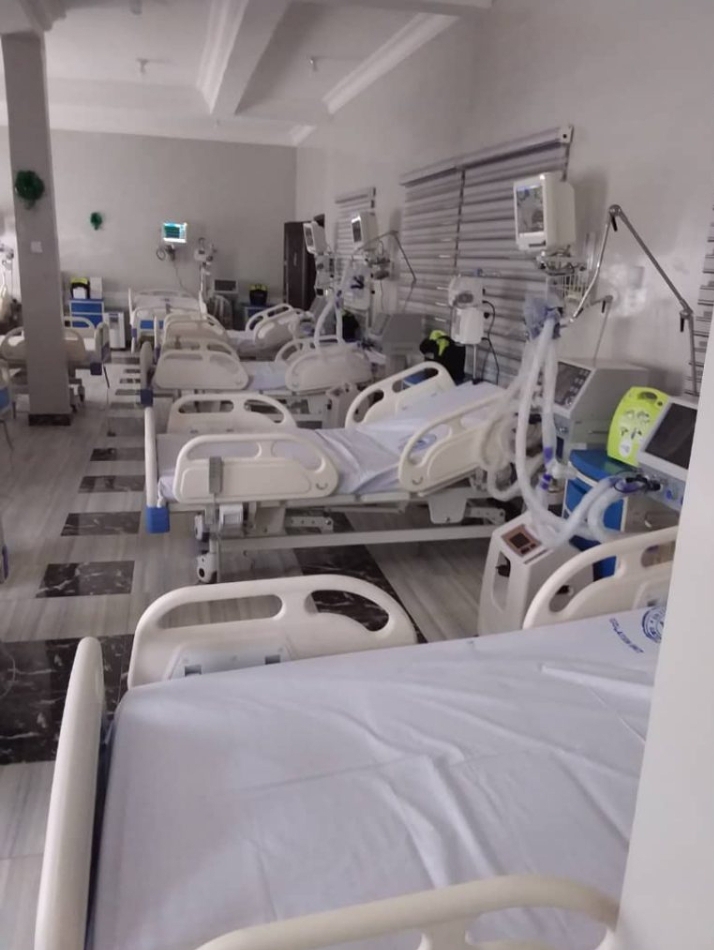
With the present financial stress, the Hospital is going through, spiced with choking insurgency which has led to a lack of electricity to power these machines it’s obvious that management needs quite a lot of support from its proprietor, the Federal Government. To ensure that lack of electricity does not continue to act as a clog in the wheel of progress, they are spending as much as Ten Million Naira on diesel on a weekly basis to keep services going on serving the very humanity it was meant for.
MOVES TO OVERCOMING THE CHALLENGES IN THE CENTRE
These are trying times indeed says Professor Bashir Tahir, Deputy Provost of the College of Medicine, a former CMAC who is now involved in training doctors. No matter how many they train yearly as long as there is insurgency, most of them move out to greener pastures. And that affects the center badly too.
For Prof Ahidjo, this project should be commissioned today and Nigerians should begin to benefit from the structure since he is a man who seems to be running faster than his generation noted one of his nurses in the facility who took this reporter round the old structure. As a matter of fact, this is just one of the myriads of structures that Ahidjo has been able to use his influence also to bring into existence in the UMTH Community since he assumed duty.
The CMD has shown from the first day he stepped into the institution’s Chief Manager’s seat that he had one mission, and that was to move this tertiary facility to the next level in terms of infrastructural developments. A feat, sources say he must have inherited from his father who was a mortgage businessman. Before the CMD, the facility had suffered from almost thirty years of infrastructural deficit. Indeed, the UMTH which has been involved in several kidney management issues such as dialysis with only thirteen functional machines left out of an initial eighteen will soon join the league of big tertiary facilities involved in kidney transplants.
EXTENSION OF THE CENTRE
The extension of the center has been seen as a blessing not only for the staff like the Head of Department Professor Ummate whose office looks like a makeshift facility to get more space to operate with staff and residents. It’s a leeway to bring increased professionalism in the current training going on in the facility.
Also commenting on the extension further, Professor Omotara concerned about the prevalence of kidney complications particularly in the entire Borno community described the introduction of the extension of the kidney center this way: “The kidney Centre is the first in the northeast region. The purpose of its existence was to provide treatment for patients with kidney disease to reduce its prevalence and severity.
The first kidney transplant was carried out at the center over a decade ago. The new extension will help to improve services and increase the number of patients that would benefit from the services.” It is also expected that the contractors who would be involved with the sale of drugs and components for dialysis would be much more comfortable and organized in serving the people. Patients will come directly to the center as a one-stop shopping port and leave satisfied.
Although the consultant engineer to the project could not be seen on-site during the visit of this reporter, a physical examination of the building shows that it has been roofed and windows space created. The building is plastered and is almost completed.
When completed, the center will have eighty-four-bed spaces, two adult female and male Nephrology wards, a sludge and sterilization center, scrub area, nursing section, adult and Pediatrics (consisting of male and female Urology and Nephrology) wards, conference room, library, a massive records section, and an impressive reception. Others will include counselor’s office and waiting room, several offices for medical workers, two big theatres for advanced operations.
The dream of the Kidney Center Extension was actualized as a result of efforts made by Senator Mohammed Ali Ndume representing Southern Borno and Chairman House Committee on Army. We gathered that in the past he assisted the hospital with many other projects.
EQUIPPING THE CENTRE
The building when completed will house sophisticated equipment worth N750m from TET fund obtained through the assistance of Kashim Imam. It is also believed that kidney treatments handled by the surgery unit of the hospital already would be more improved with the new equipment supplied by the efforts of Alhaji Kashim Imam, who is the chair of the TET fund.
Kidney stones with a high prevalence here would soon be nipped in the bud because several researches would be launched to investigate further the intricacies of this vital body organ. Some of the equipment that are already waiting to be installed are 100 watts Lithotripsy laser machine, a complete set of Upper and Lower Endoscopic equipment, -86 degrees centigrade freezer, four fully equipped Operating Theaters 2 of which are for transplant, basic diagnostic laboratory including a chemistry analyzer, a fully equipped HLA typing laboratory, consumables, etc. Professor Ibrahim Ummate who is very happy that Alhaji Kashim Imam, a Borno son has contributed to the equipping of the Kidney Center.
TRAINING OF STAFF IN THE CENTRE
On the training of doctors, head of center Ummate said that the exercise is ongoing.
“We have a consultant that has been trained here too. His name is Dr. Suleiman Mohammed Maina. We have two senior registrars currently training under us. Their names are; Dr. Umar Loskurima and Dr.Mustapha Lawan. There is no serious challenge with the training of doctors.” He posited. On the training of desperately needed nurses to complement the extension, he went on: “We have trained nurses that are currently rendering services in Federal Medical Centre Yola,
Abubakar Tafawa Balewa University Teaching Hospital Bauchi, State Specialist Hospital Maiduguri and Federal Medical Centre Nguru. We will continue to train nurses that will render service to us and other centers in need.” He assured.
Read Also: Over 50 pastors, members reacts to demolition of EYN Church in Maiduguri
The head of Center, however, regretted that the challenges they are facing with the training of nurses is getting accreditation from the nursing council which he maintained will be pursued in due course. It is the accreditation that would enable UMTH to join the league of Teaching Hospitals already with an accredited institute on Nephrology.
“The only kano, Abuja and Lagos have such full-fledged accredited one-year training institutes for nurses in the country as at present.” Noted one of the staff of the center stressing that it is high time management fights for the desired accreditation for Maiduguri to join the list. “Despite that, we are still training our nurses in-house. We
have competent hands to train nurses. Biomedical Engineers in our center also train our technicians in-house. They are also competent.” He stressed.
The Chief Medical Director informed us that the Extension and Equipping of the Kidney Center come along with training of staff both within and outside the country.
MOUNTING KIDNEY PROBLEMS IN BORNO AND NORTH-EAST NIGERIA
The extension of this facility is coming at a time when kidney complication issues have become a major challenge of the people of the northeast corner of Nigeria. In as much as kidney dialysis is about 30,000 naira per session averagely in the region and a patient with a failed kidney may need treatment about three times a week, it is high time the preventive therapeutic emphasis is placed on the front burner so that a lot of people do not have to go through that path before they lose their lives ultimately due of lack of a compatible
kidney to bring them back to normal life.
KIDNEY TRANSPLANT SUPPORT FUNDS
Professor Ummate noted that other centers have a pool of support through one foundation or the other but they do not have it in UMTH. He hopes equally that they do get access to funds from philanthropists to be able to support residents who cannot afford the cost yet need the services. Such a facility, if approved, would be known as a Kidney transplant support fund. And it would be another first for UMTH and the North East region of Nigeria.
Features/Analysis
Re: Africa Intelligence’s “Tinubu still struggling to organise foreign ministry, one year after election”; Rebuffing the Falsehood Peddled by Africa Intelligence Article about the Minister of Foreign Affairs and the Ministry
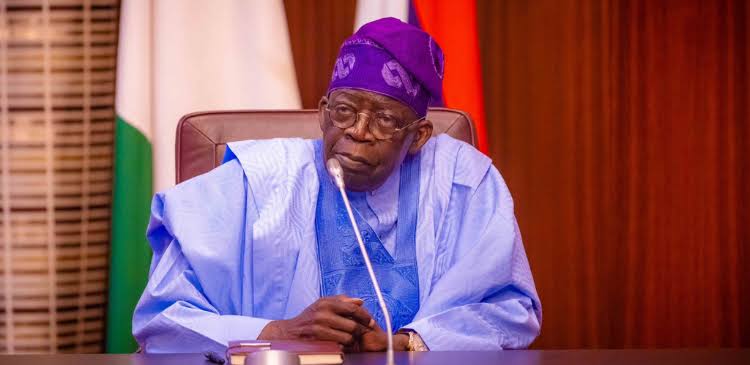
Re: Africa Intelligence’s “Tinubu still struggling to organise foreign ministry, one year after election”; Rebuffing the Falsehood Peddled by Africa Intelligence Article about the Minister of Foreign Affairs and the Ministry
By: John Okeyson
One of the fundamental principles of a true journalistic enterprise is objectivity and the propagation of truth based on research facts and data which enables the dissemination of concrete information to the public. The representation of facts is not only necessary but strengthens the democratic process in any society as it enables citizens to become aware of the true picture of things thereby eschewing falsehood and unfounded sentiments.
However, when a reputable media platform like Africa Intelligence jettisons the ethics of the journalistic profession to propagate assumptions and incorrect, it not only demeans the profession but questions the integrity of the media profession. It is for this reason that this reason that it is expedient to set the record straight with records to the allegations raised, particularly concerning the person and ability of the Honourable Minister of Foreign Affairs, Ambassador Yusuf Maitama Tuggar.
Firstly, the article by Africa Intelligence commences by raising a false alarm regarding the state of affairs in the Ministry of Foreign Affairs, which is a clear pointer to the fact that the writer of the article had no objectivity in mind while writing the diatribe against the Minister and Ministry. The opening of the article reads; “Understaffed, a minister frequently absent from his home country, ambassadors recalled to Abuja… Nigeria’s foreign ministry is in disarray, even though the president has been chair of ECOWAS since last July.”
This statement is a clear testament to the unholy motive of the writer of the article as in one sentence it discredits and raises a false alarm by insinuating that the Ministry of Foreign Affairs has not been under a capable leadership since the administration of President Tinubu Administration by declaring that the “Nigeria’s foreign ministry is in disarray”, the writer also states albeit authoritatively that “a minister frequently absent from his home country” implying that the Minister of Foreign Affairs Ambassador Tuggar has not been attending to his obligation not being around to oversee the affairs of the ministry. This portrayal is a careless display of lack of professionalism and dubious intentions on the part of the writer of the article, Africa Intelligence.
It is disingenuous for any follower of the activities of the Ministry of Foreign Affairs to suggest that the ministry is in disarray given the proactive disposition of the Minister who has been extremely active since he assumed office in August 2023.
Ambassador Tuggar upon assumption of office did not shy away from the ECOWAS crisis he met on the ground, he swiftly engaged in diplomacy to contain the multiple effects of the crisis that threatened ECOWAS’ existence by continually advocating for a diplomatic solution to the impasse rather than the military intervention earlier declared by ECOWAS before he assumed office. Until the recent allegation of sexual harassment against the former Permanent Secretary of the Ministry, the Minister maintained cordial working relations ensuring that the programmes and activities of the Ministry went on as statutorily mandated by the ethics that foregrounds the operations of the Ministry.
There has never been untoward news about any crisis in the Ministry, the erstwhile Permanent Secretary Dr. Adamu Ibrahim Lamuwa discharged his role as the Permanent Secretary in the absence of the Minister even representing the Ministry on behalf of the Ministry while the Minister was attending to other official matters. It is therefore unfounded that Africa Intelligence would write that the Ministry has been in disarray.
There is no single piece of evidence advanced to back up such an outrageous claim by African Intelligence.
Secondly, the article alleges that foreign diplomats in Abuja have remained confused as a result of the absence of the Minister to attend to his official engagement with them. This is farther from the truth. The Minister has been very much available to receive and engage with diplomats in Nigeria since he assumed office in 2023.
Last year, he held a reception in honour of members of the diplomatic community where he formally met with the diplomatic community in Nigeria at the Ministry’s headquarters in Abuja. Ever since, he has received and welcomed diplomats from around the world and when he is away on official visits, the Permanent Secretary took charge in discharging these responsibilities as contained in the various news reports obtainable in the Nigerian media.
Thus, it is false to suggest that the diplomats are confused with regards to their engagement in the country. A simple Google search would have averted this obvious misinformation by the writers of the article.
The Minister has been actively involved his duties both at home and away representing Nigeria at critical global events as it were. In 2024, the Minister has hosted the Secretary of State of the United States of America in Nigeria as he has done to other foreign envoys since assumption of office, thus, it beggars belief that anyone would suggest that the Ministers has not been living up to the responsibilities of his office as Minister of Foreign Affairs.
The Ministry of Foreign Affairs is overseen by the Minister and the Permanent Secretary and since assumption of office, Ambassador Tuggar has pursued a collaborative system of administration where the Permanent Secretary takes full charge when the Minister is away on official duties. To suggest a gap in the administration of the Ministry is to insinuate that the Ministry has not structure and is not guided by ethics.
This is preposterous to say least that anyone would think that the Ministry suffers because the Minister is away on official duties outside the countries. It betrays a clear lack of research and information on the part of Africa Intelligence. It is appalling to think that Google is just a click away to verify the operations of the Ministry.
The Permanent Secretary is the statutory authority that provides oversight in the absence of the Minister and this status quo has not changed since the Minister assumed office.
The article also alleges that the Ministry suffers once the Minister is away on official duties because of the absence of a Secretary of State.
One might then ask what the role of the Permanent Secretary to the Ministry if the activities of the Ministry would be halted because of the absence of the Minister the Ministry will function even without the presence of the Minister like it did before the Minister was appointed. Equally, the article insinuates that the “Tuggar is reputed to be less easy to get hold of than is predecessor, Geoffrey Onyeama, thereby suggesting that the Minister is inaccessible and a difficult leader.
This is a blatant fallacy invented by the writers of the article to paint Ambassador Tuggar as a difficult and inaccessible leader, almost suggesting him to be some sort of a dictator. This is clearly a manifest display of bias and hate towards a man they have not taken their time to understand.
It is sad that the noble profession of journalism has been reduced to a market place enterprise where people write without facts and recourse to the damage that they cause to the subjects of their vile vituperations often guised as social commentary. The sheer comparison of Ambassador Tuggar to Onyeama explains the insincerity of the writers of the article. It is not only a shame but a disregard for the noble profession of journalism.
The article also suggests that the acting Permanent Secretary of the Ministry, Ambassador Ben Okoyen is new therefore does not have the capacity to handle the affairs of the Ministry.
This is an indirectly attempt to discredit the rich credentials of Amb. Okoyen who is a season diplomat and civil servant versed in the affairs of Nigeria’s foreign and diplomatic relations. His recent elevation to the position of acting Permanent Secretary of the Ministry does not mean that he is incapable or inexperience of discharging the affairs of the Ministry as the sponsors of the article want us to believe.
He remains an astute civil servant and diplomat versed in the affairs of Nigeria’s foreign relations. But for people bent on casting aspersions they would go to any length to paint anyone not in their paycheck as incapable of discharging their responsibilities as the tone of this insidious diatribe clearly suggests.
In conclusion, the article also states that Nigerian embassies abroad have been left without concrete leadership as a result of the recall of former ambassadors without stating the fact that these embassies have been under the direction of chargés d’affaires who are not only seasoned diplomats but who have the experience to oversee the affairs these embassies pending the appointment of ambassadors.
The article suggests chargés d’affaires lack the requisite knowledge to hold forth the mantle of leadership pending the appointment of new ambassadors but that is not the case in actuality as it is a common practice for nations around the world to send representatives pending the appointment of ambassadors to such places and the appointed individuals play central roles in maintaining and addressing the issues of their nations until the time when ambassadors are sent to take over from them. The administration of President Bola Ahmed Tinubu has been transparent in its dealings ensuring that citizens are able to follow and appreciate the dynamics of governance, therefore to suggest otherwise is to belittle the realities that have led to the delay in appointing new ambassadors which neither the Ministry nor the Federal Government have shied away from addressing.
Perhaps what is most unprofessional in Africa Intelligence is the fact that there is no single sentence or paragraph that lay claims to having contact the authorities at the Ministry of Foreign Affairs of all the supposed issues they raised in their article.
This invariably suggest a deliberate attempt to malign and discredit the persona and office of the Minister of Foreign Affairs whereas the Ambassador has been one of the most proactive and result-driven Minister under the President Bola Ahmed Tinubu administration.
John Okeyson: A Public Affairs Analyst writes from Lugbe in Abuja.
Re: Africa Intelligence’s “Tinubu still struggling to organise foreign ministry, one year after election”; Rebuffing the Falsehood Peddled by Africa Intelligence Article about the Minister of Foreign Affairs and the Ministry
Features/Analysis
Herbert Wigwe’s Death And The Black Box Metaphor
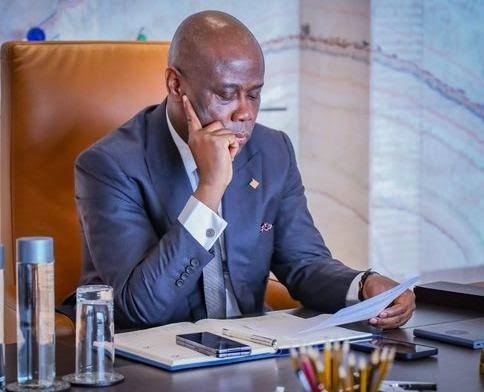
Herbert Wigwe’s Death And The Black Box Metaphor
By Clem Asika
As an inquisitive teenager growing up, I had always wondered why a certain black box was so important in an aeroplane that it was frantically searched for.
I thus considered as funny the frenzy with which the aviation authorities world over searched for it when an aircraft crashed.
What is so special about this mystery black box? Why can’t these people just buy a box of any colour and then paint it black as a replacement for the missing one they always search for whenever there is a plane crash? My callow mind would always wander and wallow in wonderment back then!
Well, it wasn’t long before I got to know that a black box is a compendium of all that transpired in a plane shortly before a crash.
In a nutshell, it gives aviators an insight into the cause of a crash or factors that lead to it.
This brings me to the tragic and heart-rending death, in a helicopter crash, of our dear brother, Herbert Wigwe, his wife, Chizoba and son, Chizzy, in faraway United States.
Before the unfortunate incident, Wigwe was one of Nigeria’s corporate Lords, a banking guru who sat atop Access Bank Holdings as CEO.
As I watched tears cascade freely down the cheeks of the high and mighty in the society during Wigwe’s burial rites, I immediately remembered the black box enigma, the aura around it and the significance it commands in the aviation world.
Yes, Wigwe and death, the grim reaper that snatched him away and dealt an excruciating blow to his family, friends and business associates, are metaphors for a black box.
According to John Donne, the legendary English poet, “Any man’s death diminishes me because I am involved in mankind”, so the overflow of emotions at Wigwe’s funeral was natural. It is only a non-living thing that will be unfeeling and unfazed in the face of such monumental loss.
But then, this uncomfortable truth: It was possible that many high flyers, men and women of timber and calibre, to borrow the late KO Mbadiwe’s phrase, who wept generously at the late Access Bank boss’ funeral did so not necessarily because his death shattered them or because they love him but because he was their black box and his death and burial meant that the black box went with him to the grave, never to be found or recovered!
Wigwe as a black box? Yes! And this is how and why: Slush funds and funds amassed under hazy circumstances may be sitting pretty good in Wigwe’s Access Bank( of course, without him knowing the source of such funds) and with the late financial wizard the only person with the code to the location of such funds.
If, before he died, he didn’t disclose the code for retrieving such funds to anyone, what it therefore means is that the funds, like a piece of information in a crashed aircraft’s black box which was never recovered, have gone with the wind, lost forever hence the free flow of tears of the owners at his funeral! You can now see the nexus or analogy between Wigwe’s death and a black box.
Former Central Bank of Nigeria, CBN Governor and former Emir of Kano, Alhaji Lamido Sanusi was one of the “weepers” at Wigwe’s funeral. Is he one of those affected by the loss of the “black box”? No one knows but there is a viral rumour that he is a part owner of Access Bank.
Also, by his admission, he entrusted his entire life savings in the care of Wigwe which he claimed was for the education of his children for he believed he would die before the late Acess Bank boss.
And talking about Sanusi, the ex-Emir’s opaque past flashes through the minds.
Sanusi’s tears at Wigwe’s funeral, his effusive words of love for Wigwe, his kind words for the departed banker, and his glowing tribute for him contrast sharply with his controversial persona.
When Sanusi and his paid agents talk glibly about building bridges and about his chummy relationship with the late Wigwe, an Igboman from Rivers, and how the latter stood by him when he was dethroned as an Emir, the late Gideon Akaluka, the young Igbo trader who was in 1995 beheaded by a band of Wahabist Islamic fundamentalists allegedly led by Sanusi for alleged discretion of the Koran, will probably turn in his grave with indignation.
How come Sanusi is now posturing as a pan-Nigerian and a broad-minded fellow weaned of Islamic fundamentalism and ethnocentric tendencies?
If indeed he has been bleached of the above toxic tendencies by the effluxion of time, then he should quickly explain to Akaluka’s family why their son deserved the cruel fate visited on him by him and his murderous gang of Wahabists.
Similarly, if Sanusi has indeed weaned himself from an ethnoreligious and narrow parochial mindset as he demonstrated by his eulogy and tears at Wigwe’s funeral, then I think the family of Rita Oruru deserves not only a public apology from the dethroned Emir but a compensation for the trauma he caused them via his rabid Islamic zealotry.
Rita Ese Oruru, do you remember her and her pathetic abduction and forceful conversion to Islam under the superintendence of Sanusi as the Emir of Kano?
Rita’s story is still fresh and leaves a deep hurt in the hearts: The abduction of Ese Rita Oruru, the youngest child of Charles Oruru and Rose Oruru, occurred on 12 August 2015 at her mother’s shop in Yenagoa local government area, Bayelsa State.
Ese, who was 13 years old at the time, was abducted by a man named Yunusa Dahiru (alias Yellow) and taken to Kano, where she was raped, forcibly Islamized and married off without her parents’ consent.
The forced conversion and marriage took place in the palace of the then Emir of Kano, Sanusi Lamido Sanusi.
Similarly, Southern Nigeria deserves an apology from ex Emir Sanusi for his sectional inclination while he held sway as the CBN Governor.
Recall that as the Governor of the apex bank, Sanusi brazenly sited all the Social Corporate Responsibility interventions of the apex bank in the North.
Meanwhile, for Sanusi and his likes who may have lost a precious black box by Wigwe’s untimely and tragic death, I say ndo, pele, sorry. Such is life, take heart!
Clem Asika writes from Ibusa, Delta State
Herbert Wigwe’s Death And The Black Box Metaphor
Features/Analysis
Surviving Lassa fever in Nigeria: The stories of Ngozi and Oluchi
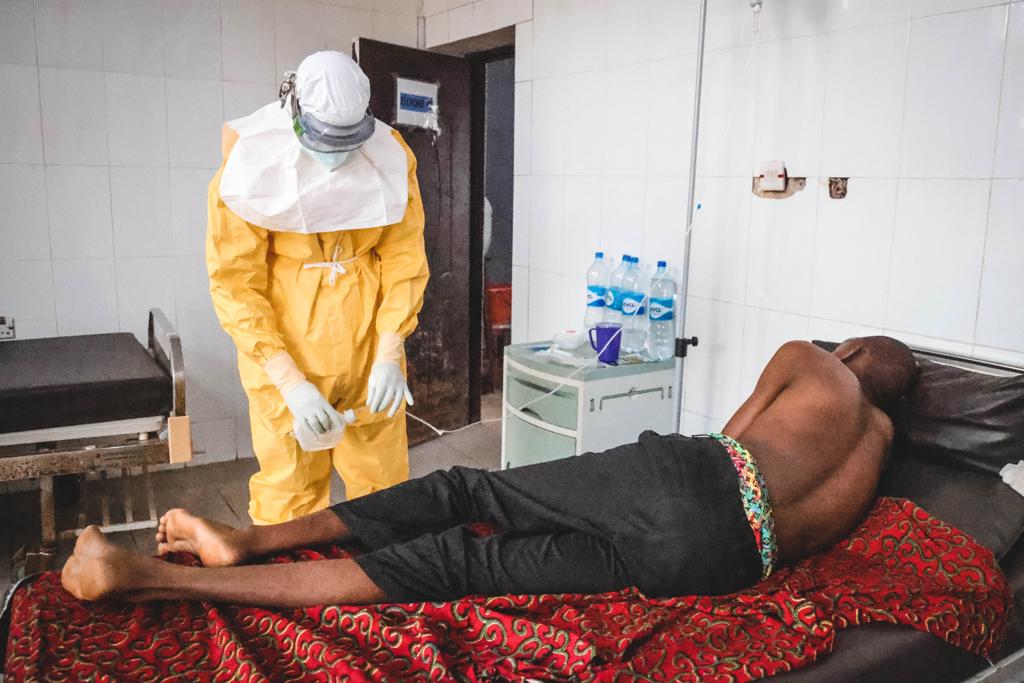
Surviving Lassa fever in Nigeria: The stories of Ngozi and Oluchi
By: Michael Mike
“My mother-in-law asked me how I was feeling, and I told her I was fine, but I knew I was not,” says Ngozi, a 28-year-old petty trader from Abakaliki. “I was stooling, vomiting and couldn’t keep my eyes open.” After trying various treatments at home, Ngozi was taken to hospital in Abakaliki, in southeast Nigeria’s Ebonyi state, where she was diagnosed with Lassa fever. “After two days there, my health deteriorated and I even lost consciousness at some point,” she says.
Lassa fever is a haemorrhagic fever that causes serious damage to various organs, reducing the body’s ability to function. The virus is contagious and can spread from person to person via bodily fluids, including saliva, urine, blood, and vomit. The disease affects 100,000 to 300,000 people every year across Western Africa and causes around 5,000 deaths. Last year in Nigeria, there were 8,978 suspected cases and 1,227 confirmed cases of Lassa fever (Nigerian Centre for Disease Control).
The city of Abakaliki has seen repeated outbreaks of the disease since 2018, when an MSF (Médecins Sans Frontières) team arrived to help identify people with symptoms and care for patients in Alex-Ekueme Federal Teaching Hospital (AE-FUTHA). Around 600 km further north, a second MSF team has been helping care for patients with Lassa fever in Tafawa Balewa hospital, Bauchi state, since 2022. Last year, the two MSF teams cared for 618 patients with suspected or confirmed Lassa fever.
Spread by rats
Lassa fever is spread by a species of rat which is found mainly in three states in eastern and southern Nigeria: Edo, Ondo and Ebonyi. When infected rodents feed on food that is left out, they leave traces of the virus via their saliva and faeces. The disease usually peaks in the dry season when rats scavenge for food around people’s houses.
“Transmission of Lassa fever occurs throughout the year, but large seasonal outbreaks occur during the dry season, from December to April, when rats leave the fields to find food from other sources, such as people’s houses,” says Ben Uzoma, MSF health promotion manager.
To help tackle the disease at source, MSF has launched a ‘vector control strategy’ in local communities in Abakaliki, which includes setting rat traps, using rodenticides and sharing health information messages on proper waste management, food preparation and storage.
Diagnostic difficulties
When a person is infected with the virus, they may experience symptoms including a fever, body aches, a stomach-ache and vomiting – symptoms very similar to those of malaria, which can make it difficult to identify cases of Lassa fever in a timely manner.
Oluchi, a 26-year-old mother of four, from Ebonyi state, does not know how she contracted the disease, but she recalls when the symptoms started. “I started having a high fever and was vomiting,” she says. “My husband took me to a private hospital, where I was administered malaria medication, but the symptoms only worsened. The doctors could not figure out what was wrong with me, so they referred me to Alex-Ekueme hospital to test for Lassa fever.”
To help detect cases of Lassa fever early, MSF has developed a screening form in collaboration with Alex-Ekueme hospital, with which healthcare workers can spot suspected cases by recording and analysing patients’ general and major symptoms and matching it with their health history and contact with rodents or an infected person.
Patient care
As soon as a patient arrives at AE-FUTHA with suspected Lassa fever, they are admitted to the hospital’s isolation centre, built by MSF. Patients who test positive are immediately moved to the ‘virology unit’ for treatment. This barrier measure is put in place to separate Lassa fever patients from other patients and minimise the risk of infection for healthcare workers and patients’ relatives.
“After my test came out positive, I started receiving treatment,” says Ngozi. “They gave me food, water, and everything I needed. So many doctors and nurses constantly checked on me throughout the day, and after seven days my test results came out negative.”
Emotional support
Contracting Lassa fever can take a toll on one’s emotional and psychological wellbeing. MSF mental health teams provide counselling and psychosocial support to patients with suspected or confirmed Lassa fever throughout their hospital stay, through individual and group discussions, as well as playing games and doing puzzles.
“My healing was rapid and I received a lot of support from mental health counsellors,” says Ngozi. “They were always present during my treatment.”
Oluchi’s experience with Lassa was so harrowing that she thought she was going to die. “I got so scared at the thought of dying – I was terrified,” she says. “But one of the MSF mental health counsellors came often to comfort me and told me not to worry.”
Before discharge, patients are provided with information on expected symptoms and potential mental health impacts, so they are well-informed and prepared for life as a survivor of Lassa fever. Patients’ families also receive support from the mental health team to help them understand and deal with their relatives’ condition. “At the time, I was short-tempered,” remembers Ngozi. “Thankfully, my family understood why, as the mental health counsellor had informed them beforehand.”
Challenges of tackling Lassa fever
Despite MSF’s efforts, challenges remain in tackling outbreaks of the disease in Nigeria. These include a lack of awareness among health workers, a shortage of training and research on Lassa fever, limited resources in comparison to the cost of treatment, and limited access to healthcare facilities. Alex-Ekueme Federal Teaching Hospital is the only treatment centre for Lassa fever in southeast Nigeria, while most hospitals across Western Africa are not fully equipped to handle complex cases.
Meanwhile, for many people with symptoms, seeking medical attention in a hospital remains the last choice. Sick people usually start by consulting medicine sellers or traditional healers, with the result that patients often show up late at hospital with severe complications. By this stage, their chances of survival may be slim.
Survivors of Lassa fever also often face stigma from their communities due to a widespread lack of knowledge about the disease; some people mistakenly believe that survivors are contagious and that catching the disease is a sign of poor hygiene or a punishment from God.
“When I returned home, I was excluded by my peers,” says Oluchi. “There was a rumour going around that I had been in the mortuary because of how skinny I was. People were running away from me because of the contagious nature of the disease.”
After leaving hospital and returning to their communities, survivors continue to receive support from MSF’s mental health staff, who do their best to ensure that they are reintegrated back into their communities.
Working with communities
At the same time, MSF health promoters work with communities to counter misinformation and lack of knowledge about Lassa fever. “We let people know that those who have been treated and cured from Lassa fever are no longer contagious,” says Uzoma.
During the peak season of the disease, MSF’s health promotion teams organise health education and community engagement activities, targeting religious centres, markets, and schools in hotspot areas. With the help of flyers, leaflets, flip charts, demonstrations and radio spots, the teams share information on Lassa fever and make sure that people know where they can receive free medical care.
The work of MSF’s health promoters continues year-round. “We know that behavioural change does not happen instantly and that we must continuously talk about it before people start changing,” says Uzoma.
Surviving Lassa fever in Nigeria: the stories of Ngozi and Oluchi
-

 News4 months ago
News4 months agoRoger Federer’s Shock as DNA Results Reveal Myla and Charlene Are Not His Biological Children
-

 Opinions2 years ago
Opinions2 years agoTHE PLIGHT OF FARIDA
-

 News4 months ago
News4 months agoEYN: Rev. Billi, Distortion of History, and The Living Tamarind Tree
-
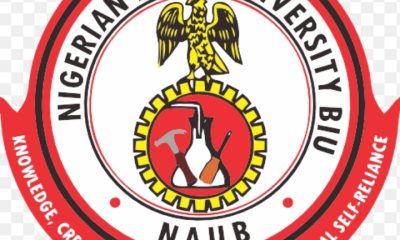
 Columns5 months ago
Columns5 months agoArmy University Biu: There is certain interest, but certainly not from Borno.
-
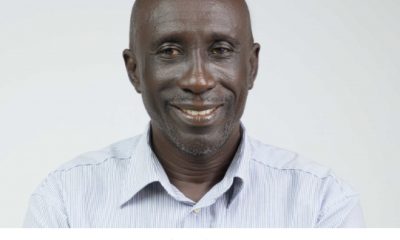
 ACADEMICS5 months ago
ACADEMICS5 months agoA History of Biu” (2015) and The Lingering Bura-Pabir Question (1)
-

 Opinions5 months ago
Opinions5 months agoTinubu,Shettima: The epidemic of economic, insecurity in Nigeria
-
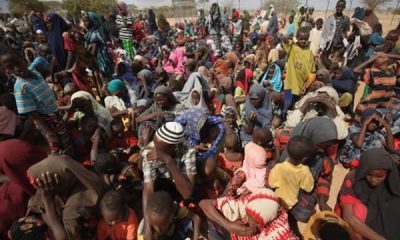
 National News5 months ago
National News5 months agoFraud and Mismanagement Rock INGO’s IDP Cash Assistance Effort in Bama
-
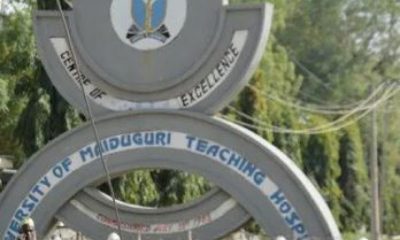
 Opinions4 months ago
Opinions4 months agoUMTH:…and the testimonies of patients and patient relations





